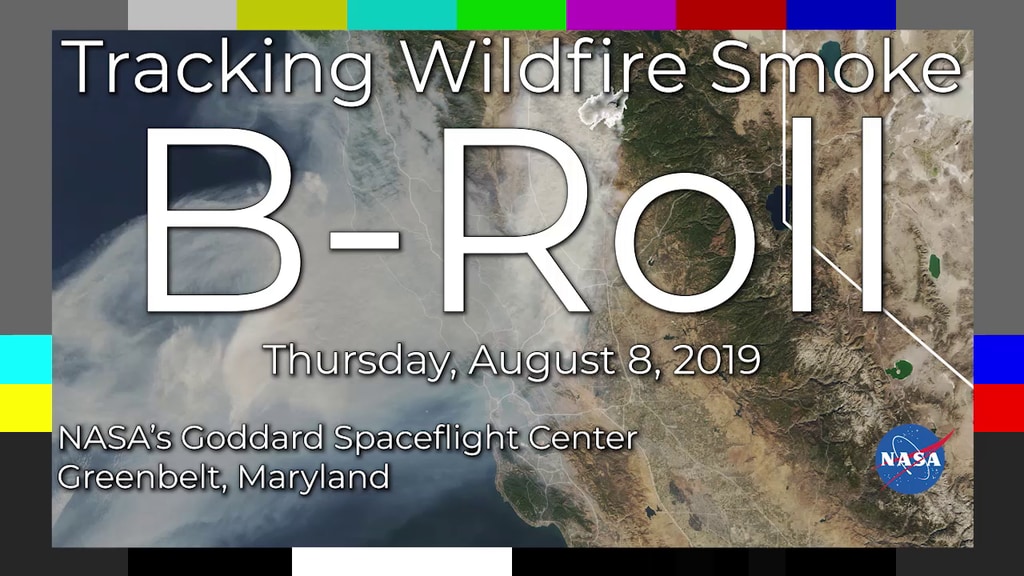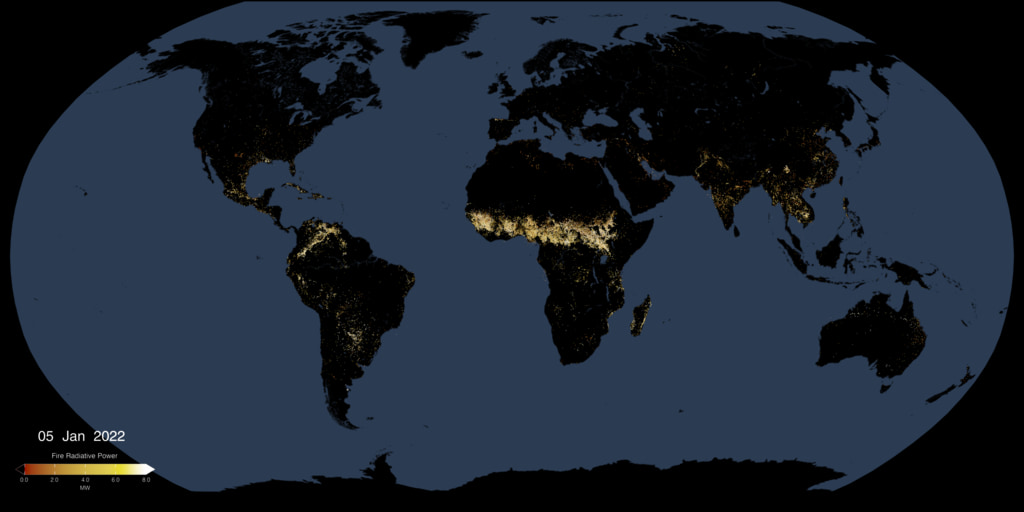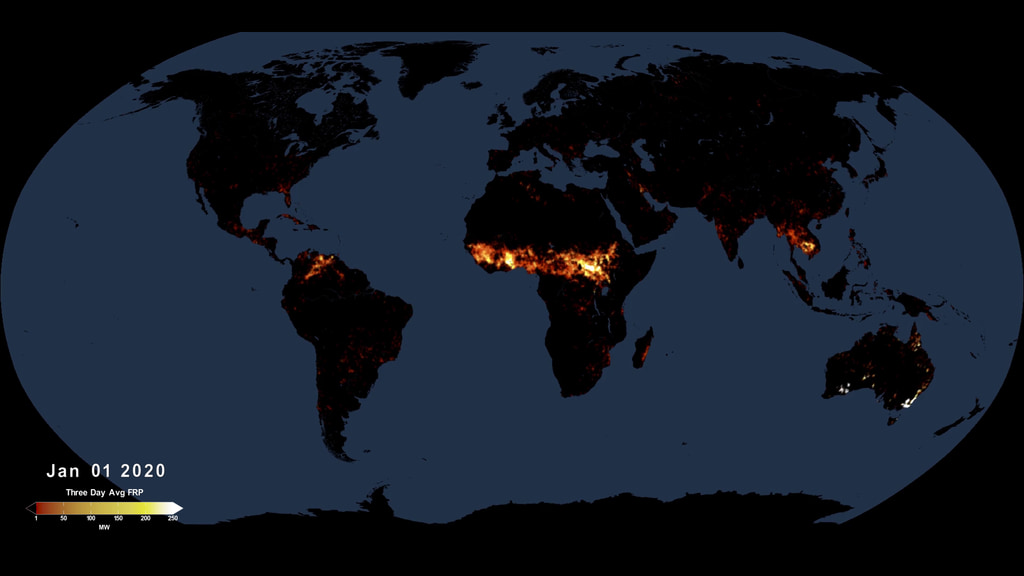A newer version of this visualization is available.
Active Fires As Observed by VIIRS, January-September 2021
This animated visualization uses a moving three-day average of summed VIIRS measurments of fire radiative power (FRP), to present a view of fire intensities around the globe.
This visualization shows active fires as observed by the Visible Infrared Imaging Radiometer Suite, or VIIRS, between January 1 and September 24 2021. The VIIRS instrument flies on the Joint Polar Satellite System’s Suomi-NPP and NOAA-20 polar-orbiting satellites. Instruments on polar orbiting satellites typically observe a wildfire at a given location a few times a day as they orbit the Earth from pole to pole. VIIRS detects hot spots at a resolution of 375 meters per pixel, which means it can detect smaller, lower temperature fires than other fire-observing satellites. Its observations are about three times more detailed than those from the MODIS instrument, for example. VIIRS also provides nighttime fire detection capabilities through its Day-Night Band, which can measure low-intensity visible light emitted by small and fledgling fires. This visualization uses data from the Suomi-NPP VIIRS instrument, and will be updated periodically until the end of 2021.
Animated Wildfire Intensity, North America
Date Layer Only
Credits
Please give credit for this item to:
NASA's Scientific Visualization Studio
-
Visualizer
- Trent L. Schindler (USRA)
-
Scientist
-
Doug C. Morton
(NASA/GSFC)
-
Doug C. Morton
(NASA/GSFC)
Datasets used
-
BMNG (Blue Marble: Next Generation) [Terra and Aqua: MODIS]
ID: 508Credit: The Blue Marble data is courtesy of Reto Stockli (NASA/GSFC).
This dataset can be found at: http://earthobservatory.nasa.gov/Newsroom/BlueMarble/
See all pages that use this dataset -
Fire Pixels [Suomi NPP: VIIRS]
ID: 1053
Note: While we identify the data sets used on this page, we do not store any further details, nor the data sets themselves on our site.
Release date
This page was originally published on Friday, October 1, 2021.
This page was last updated on Monday, January 6, 2025 at 12:19 AM EST.



![Complete transcript available.Universal Production Music: Big Found by Ran Shir [BMI], Rotem Moav [BMI]; Swirling Blizzard by Laurent Dury [SACEM]; Dry Ice by Alessandro Rizzo [PRS], Elliot Greenway Ireland [PRS], Paper Boy [PRS]; Into Motion by Peter Larsen [PRS] This video can be freely shared and downloaded. While the video in its entirety can be shared without permission, some individual imagery provided by Pond5.com is obtained through permission and may not be excised or remixed in other products. For more information on NASA’s media guidelines, visit https://www.nasa.gov/multimedia/guidelines/index.html](/vis/a010000/a014200/a014285/14285_Thumbnail.jpg)